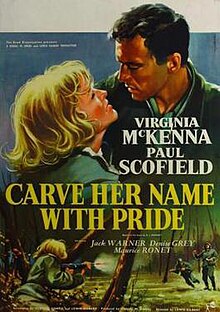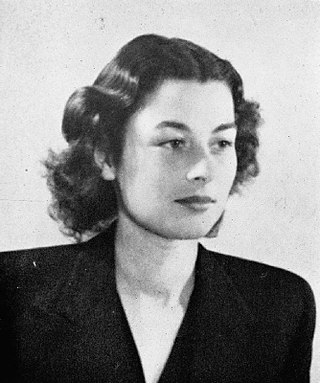
Violette Reine Elizabeth Szabo, GC was a British-French Special Operations Executive (SOE) agent during the Second World War and a posthumous recipient of the George Cross. On her second mission into occupied France, Szabo was captured by the German army, interrogated, tortured, and deported to Ravensbrück concentration camp in Germany, where she was executed.
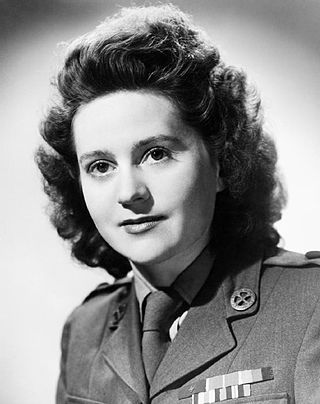
Odette Marie Léonie Céline Hallowes,, also known as Odette Churchill and Odette Sansom, code named Lise, was an agent for the United Kingdom's clandestine Special Operations Executive (SOE) in France during the Second World War. She was the first woman to be awarded the George Cross by the United Kingdom and was awarded the Légion d'honneur by France. The following information relating to her war service uses 'Sansom' as this was her surname during this period.
Colonel Maurice James Buckmaster was the leader of the French section of Special Operations Executive and was awarded the Croix de Guerre.
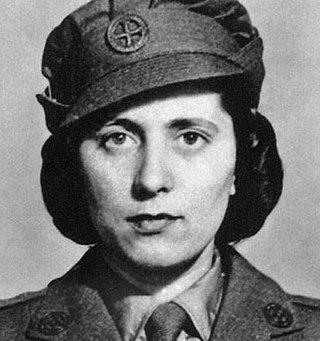
Andrée Raymonde Borrel, code named Denise, was a French woman who served in the French Resistance and as an agent for Britain's clandestine Special Operations Executive in World War II. The purpose of SOE was to conduct espionage, sabotage, and reconnaissance in occupied Europe against the Axis powers, especially Nazi Germany. SOE agents allied themselves with resistance groups and supplied them with weapons and equipment parachuted in from England.

The Valençay SOE Memorial is a monument in France to the members of the Special Operations Executive F Section who lost their lives working to liberate the country during World War II.
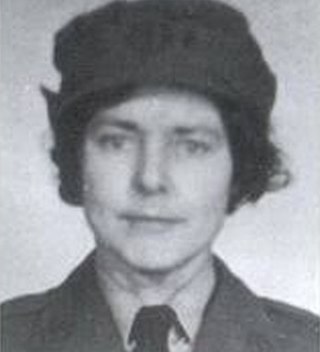
Cecile Margot Lefort served in the Women's Auxiliary Air Force (WAAF) and in France for the United Kingdom's clandestine Special Operations Executive (SOE) during the Second World War. The purpose of SOE was to conduct espionage, sabotage and reconnaissance in occupied Europe against the Axis powers, especially Nazi Germany. SOE agents allied themselves with French Resistance groups and supplied them with weapons and equipment parachuted in from England.

Yolande Elsa Maria Beekman was a British spy in World War II who served in the Women's Auxiliary Air Force (WAAF) and the Special Operations Executive. She was a member of SOE's Musician circuit in occupied France during World War II where she operated as a wireless operator until arrested by the Gestapo. She was subsequently executed at the Dachau concentration camp.
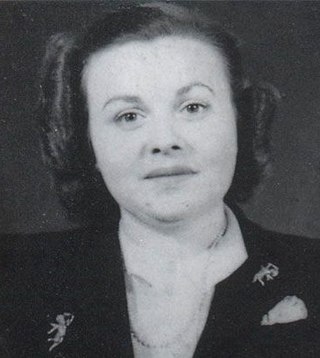
Madeleine Zoe Damerment was a French agent of the United Kingdom's clandestine Special Operations Executive (SOE) organization during World War II. The purpose of SOE was to conduct espionage, sabotage, and reconnaissance in countries occupied by the Axis powers, especially Nazi Germany. SOE agents allied themselves with resistance groups and supplied them with weapons and equipment parachuted in from England. Damerment was first involved in escape lines helping downed allied airmen escape occupied France. She fled France in March 1942 to avoid arrest. After arriving in Britain, she was recruited by the SOE. Damerment was to be a courier for SOE's Bricklayer circuit but was captured by the Gestapo on 29 February 1944 upon arrival in France. The Gestapo knew she was coming because they had captured SOE radios and were reading SOE radio messages. She was subsequently executed at the Dachau concentration camp on 13 September 1944 along with three other female SOE agents.

Lilian Vera Rolfe,, code name Nadine, was an agent of the United Kingdom's clandestine Special Operations Executive (SOE) organisation in France during World War II. The purpose of SOE was to conduct espionage, sabotage and reconnaissance in occupied Europe against the Axis powers, especially Nazi Germany. SOE agents in France allied themselves with French Resistance groups and supplied them with weapons and equipment parachuted in from England.

Denise Madeleine Bloch was a French citizen who worked as an agent with the clandestine British Special Operations Executive (SOE) organization in the Second World War. The purpose of SOE was to conduct espionage, sabotage, and reconnaissance in countries occupied by the Axis powers, especially those occupied by Nazi Germany. SOE agents allied themselves with resistance groups and supplied them with weapons and equipment parachuted in from England.

Vera May Atkins was a Romanian-born British intelligence officer who worked in the France Section of the Special Operations Executive (SOE) from 1941 to 1945 during the Second World War.
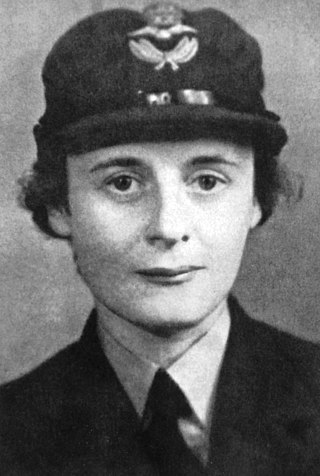
Diana Hope Rowden served in the Women's Auxiliary Air Force and was an agent for the United Kingdom's clandestine Special Operations Executive (SOE) during World War II. Rowden was a member of SOE's Acrobat circuit in occupied France where she operated as a courier until she was arrested by the Gestapo. She was subsequently executed at the Natzweiler-Struthof concentration camp.

Vera Leigh was an agent of the United Kingdom's clandestine Special Operations Executive during World War II.
The SOE F Section timeline lists the significant events in the history of Section F of the Special Operations Executive. The Special Operations Executive (SOE) was a clandestine organization of the United Kingdom during World War II. The purpose of SOE was to conduct espionage, sabotage, and reconnaissance in countries occupied by the Axis powers. SOE agents allied themselves with resistance groups and supplied them with weapons and equipment parachuted in from England. Section F was responsible for many of SOE's activities in France which was occupied by Nazi Germany.

Sonia Olschanezky was a member of the French Resistance and the Special Operations Executive during World War II. Olschanezky was a member of the SOE's Juggler circuit in occupied France where she operated as a courier until she was arrested by the Gestapo and was subsequently executed at the Natzweiler-Struthof concentration camp.

The First Aid Nursing Yeomanry (Princess Royal's Volunteer Corps) (FANY (PRVC)) is a British independent all-female registered charity formed in 1907 and active in both nursing and intelligence work during the World Wars. Its members wear a military-style uniform, but it is not part of the Regular Army or Army Reserve; members do not train at Sandhurst, nor do they hold a commission.

Dame Virginia Anne McKenna is a British stage and screen actress, author, animal rights activist, and wildlife campaigner. She is best known for the films A Town Like Alice (1956), Carve Her Name with Pride (1958), Born Free (1966), and Ring of Bright Water (1969), as well as her work with the Born Free Foundation.
"The Life That I Have" is a short poem written by Leo Marks and used as a poem code in the Second World War.
This is an incomplete list detailing the codenames and aliases used by F Section agents of the Special Operations Executive.
Winterfold House is one of the few private country properties to be designed by London architect Edward Blakeway I'Anson, F.R.I.B.A., M.A. Cantab of St Laurence Pountney Hill, E.C. He was the elder son of Edward I'Anson JP, born in London and educated at Cheltenham College and Cambridge University. He followed his father's profession and was architect and surveyor to St Bartholomew's Hospital in London. The Architect’s practice continued by him was one of the oldest established in the country, and many of the finest buildings in the City of London including the new Corn Exchange in Mark Lane, London are of his design. He was Master of the Worshipful Company of Merchant Taylors in 1908. In partnership with his father Edward I'Anson they had earlier made a successful major refurbishment to Fetcham Park House Surrey.
